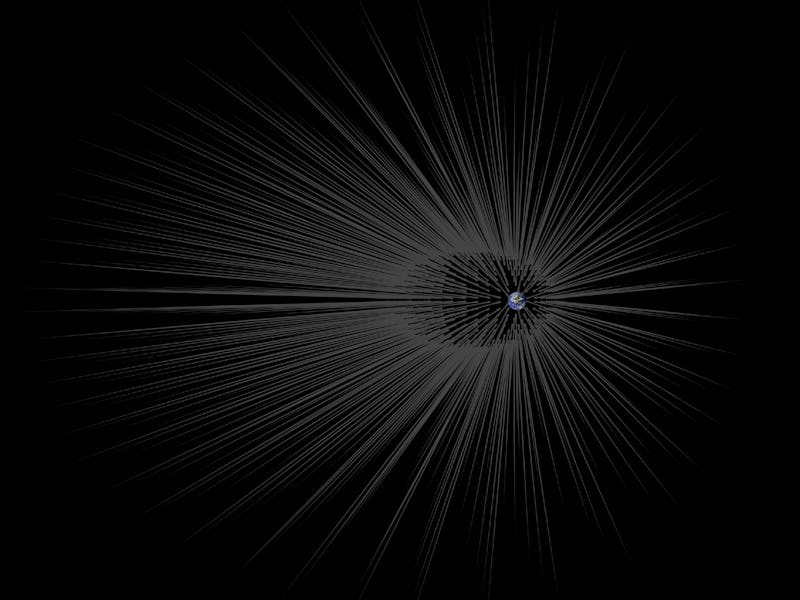Earth Might Be Covered in Hairs of Dark Matter
It's a hairy situation.

We can currently observe and study 4.9 percent of matter in the universe. Of the remaining 95.1 percent, about 26.8 percent of matter is actually made up of what scientists call “dark matter,” which is invisible to our eyes and all of our instruments, incapable of emitting or absorbing light or any electromagnetic radiation.
Absence of evidence isn’t evidence of absence: Dark matter must exist. For decades, astrophysicists have observed strange phenomena between the observable mass of large objects and their gravitational effects. For these objects to do the things they do and possess the gravitational pull we can empirically measure, there must be more to them than meets the eye. For instance, dark matter is fundamental to our understanding of how galaxies form; gravity is responsible for keeping dark matter and ordinary matter together in order to allow these incredible collections of stars, gas, and dust to come into being.
Dark matter is a hairy subject, and it’s about to get even hairier. A new study conducted by astrophysicists at NASA’s Jet Propulsion Laboratory proposes that some dark matter exists as a series of long filaments, or “hairs.”
Research and calculations from the last two decades suggest that dark matter forms into these neat streams of particles that orbit galaxies and can stretch out longer than star systems themselves, zooming around in different directions. All the particles in such a stream travel at the same velocity.
Earth surrounded by filaments of dark matter 'hairs'.
Things get really interesting when dark matter streams travel through a planet — which ordinary matter obviously can’t do. The researchers used computer simulations to determine that when those dark matter particles move through an object like Earth, they are bent and focused into very thin, very dense hairs at the planet’s core. Those hairs emerge out the other side of the planet, while the roots of these hairs are more than a billion times more dense than the original streams. Streams passing through the cores of bigger planets could produce way denser filaments; for example, Jupiter would be expected to produce roots that are a trillion times denser than the original dark matter stream.
Finding those roots and studying them could provide data on dark matter that finally cracks open one of the biggest mysteries of the universe. Those hairs would also likely change in ways that reflect their transition and movement through the planet, providing incredible geological data about the layers under the surface of an object.
It’s important to caution that these findings are just the result of simulations — ones based on a great deal of robust data, but simulations nevertheless. If we want to really study dark matter, we’re going to have to find it. For something that makes up over one-fifth of our universe, dark matter continues to stay very well hidden.